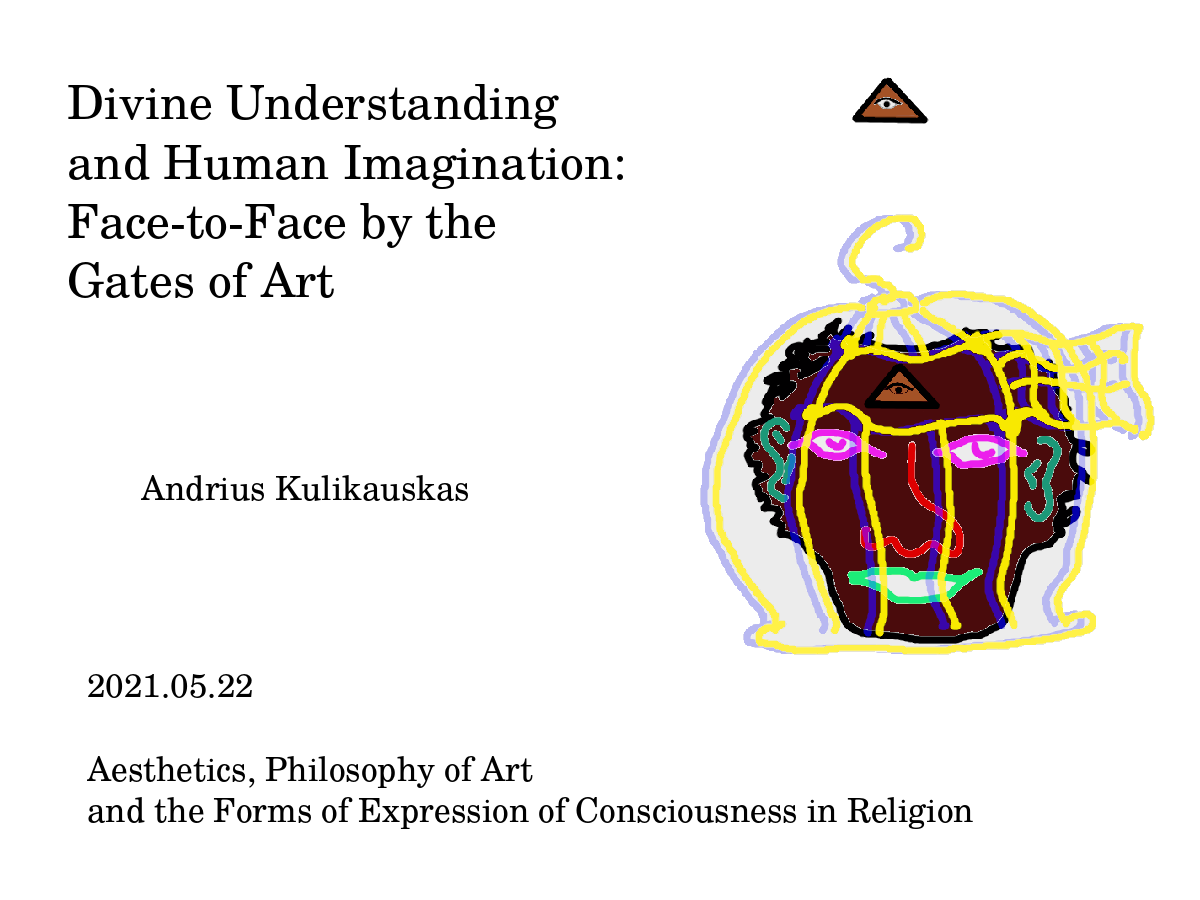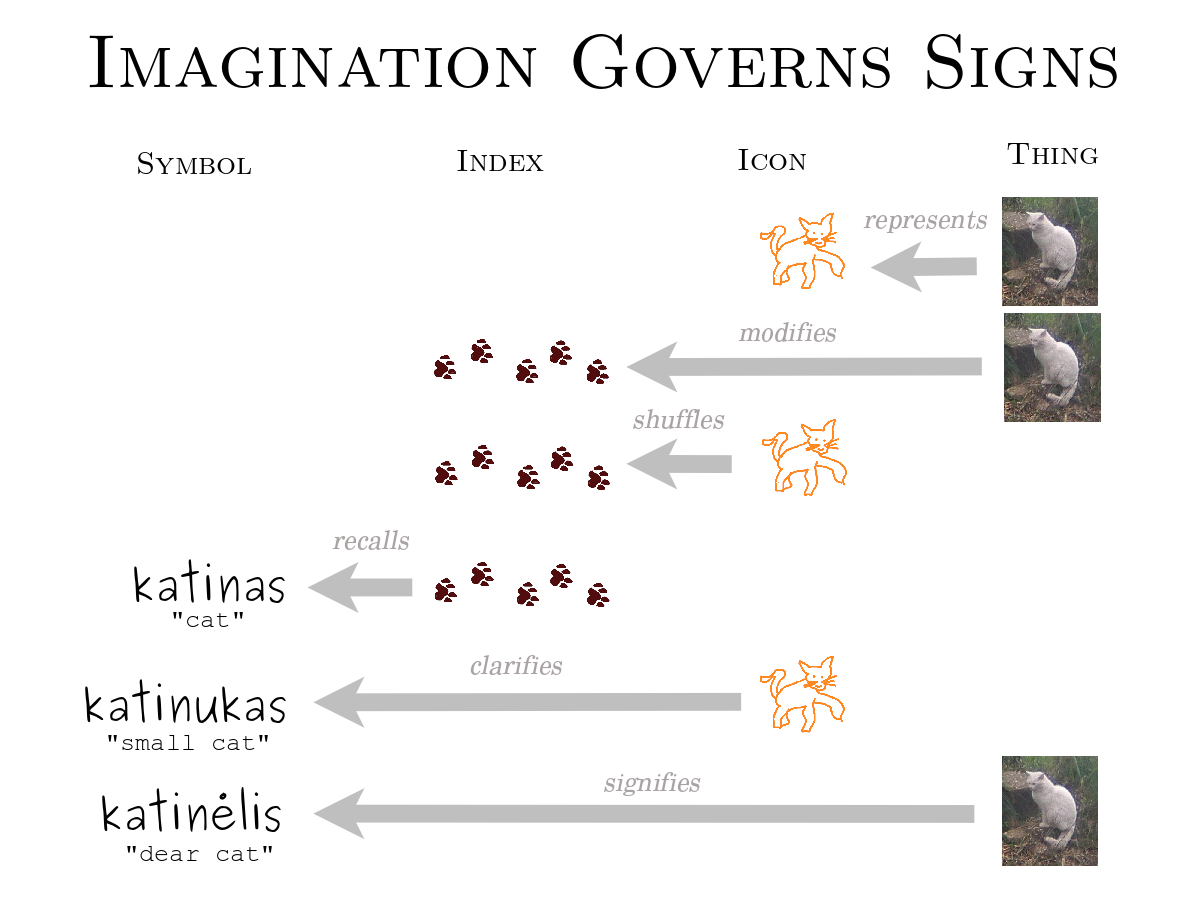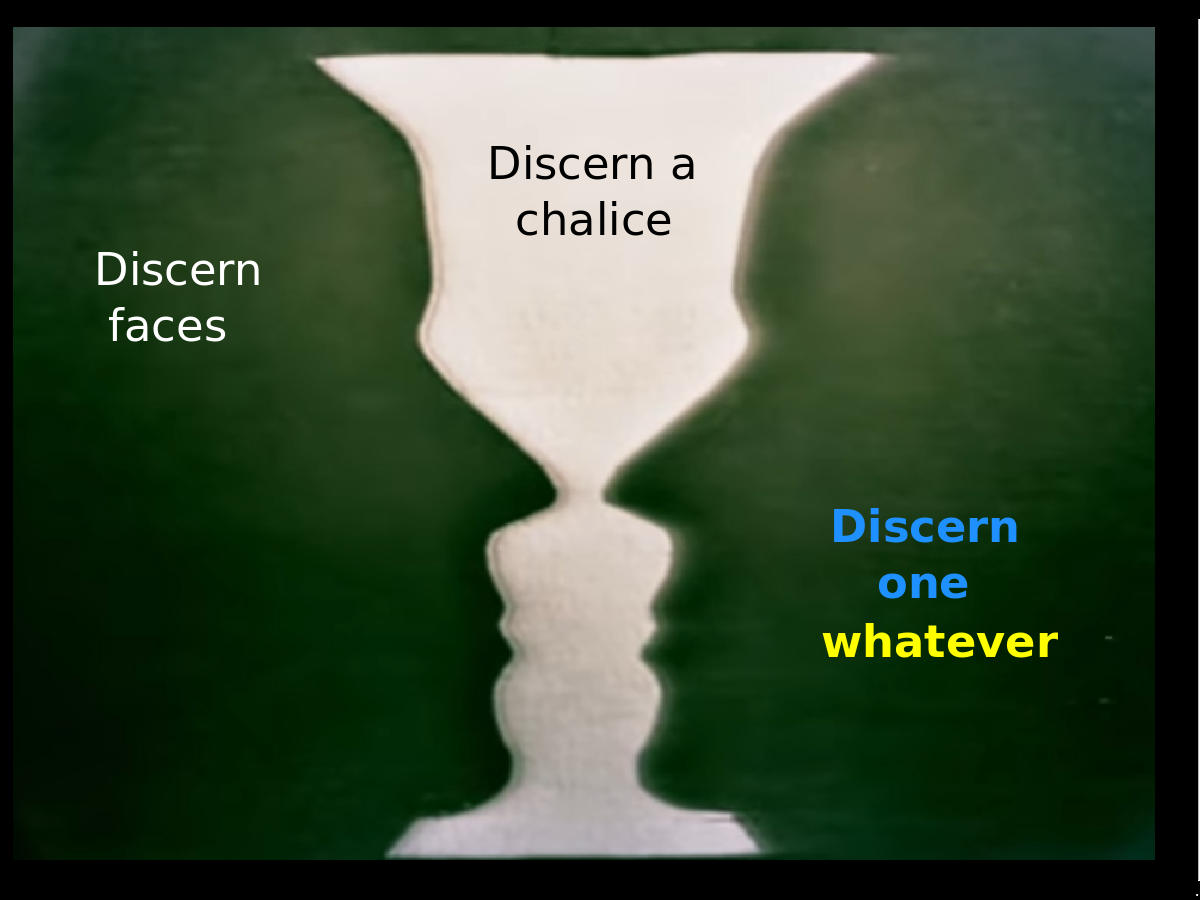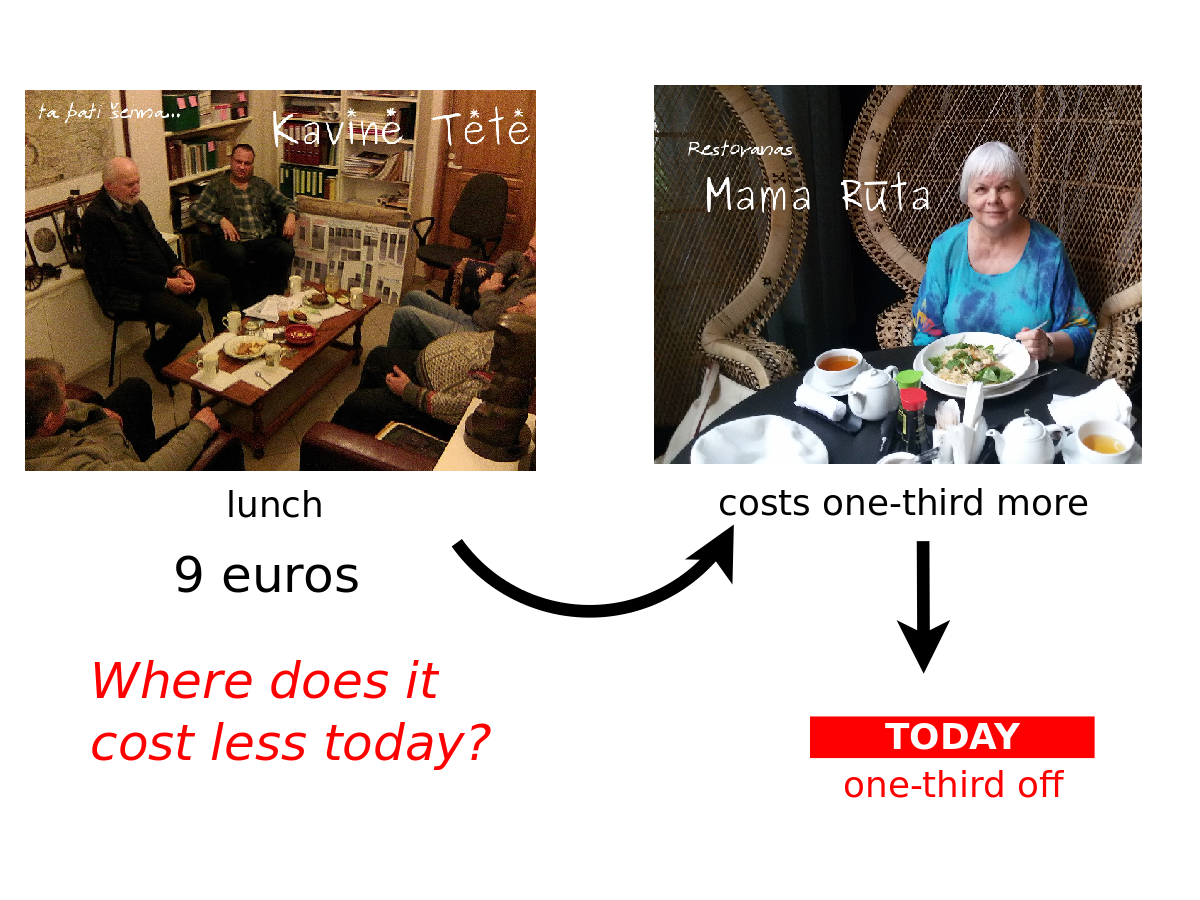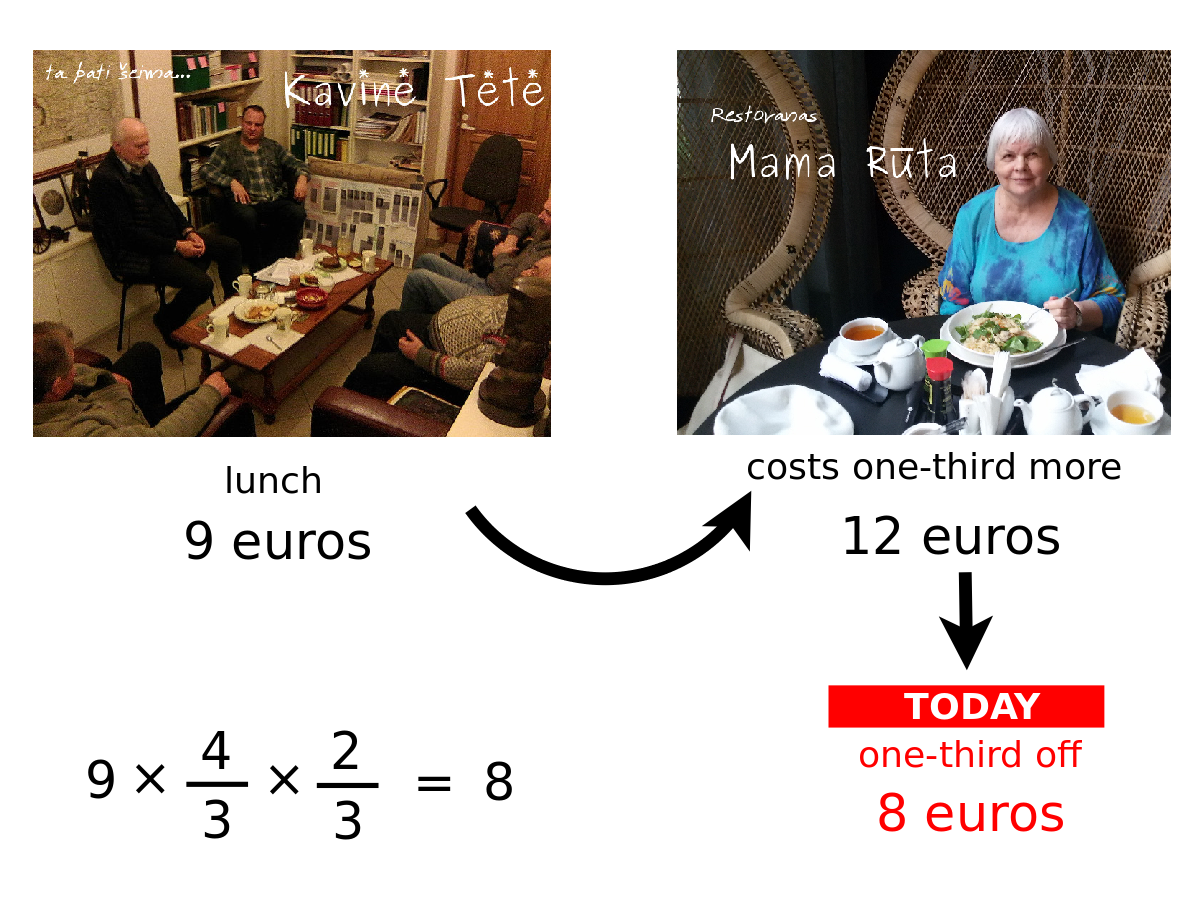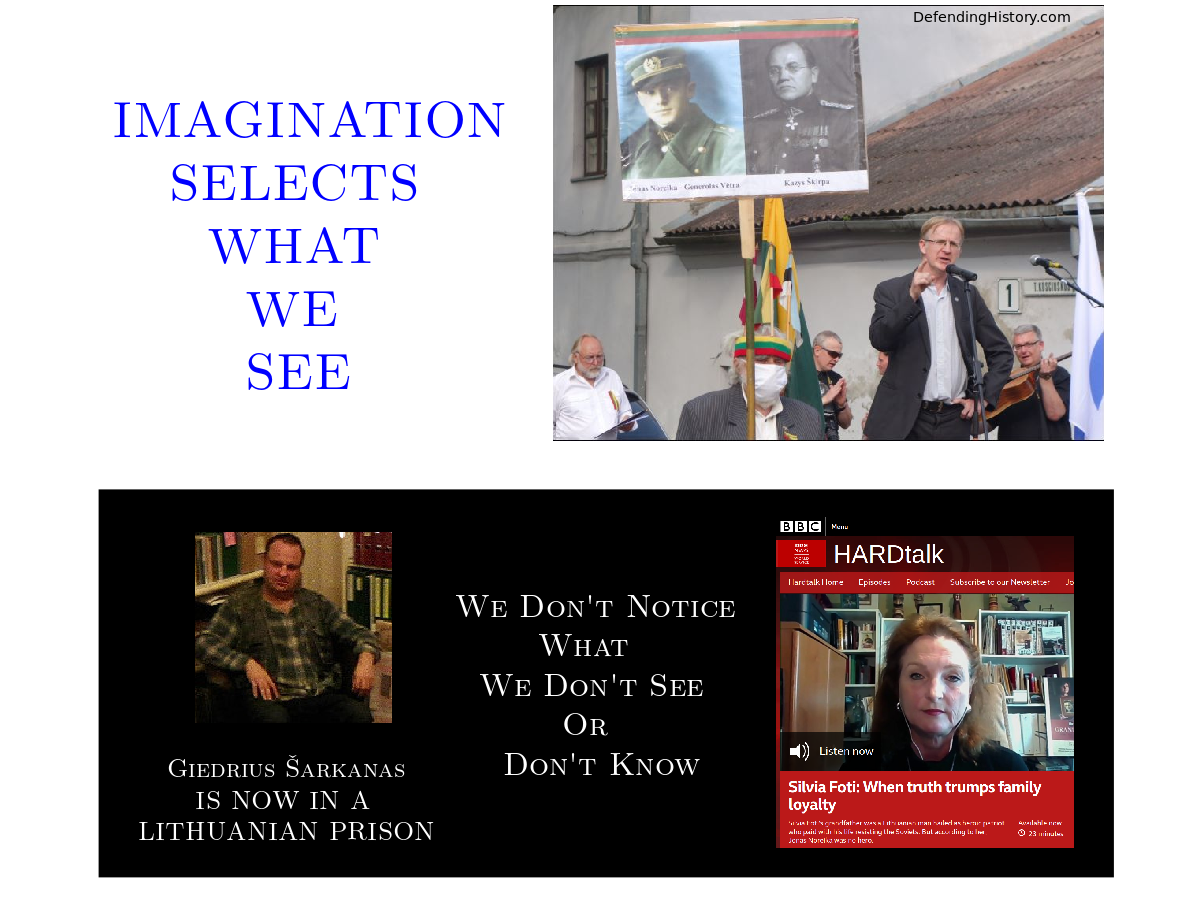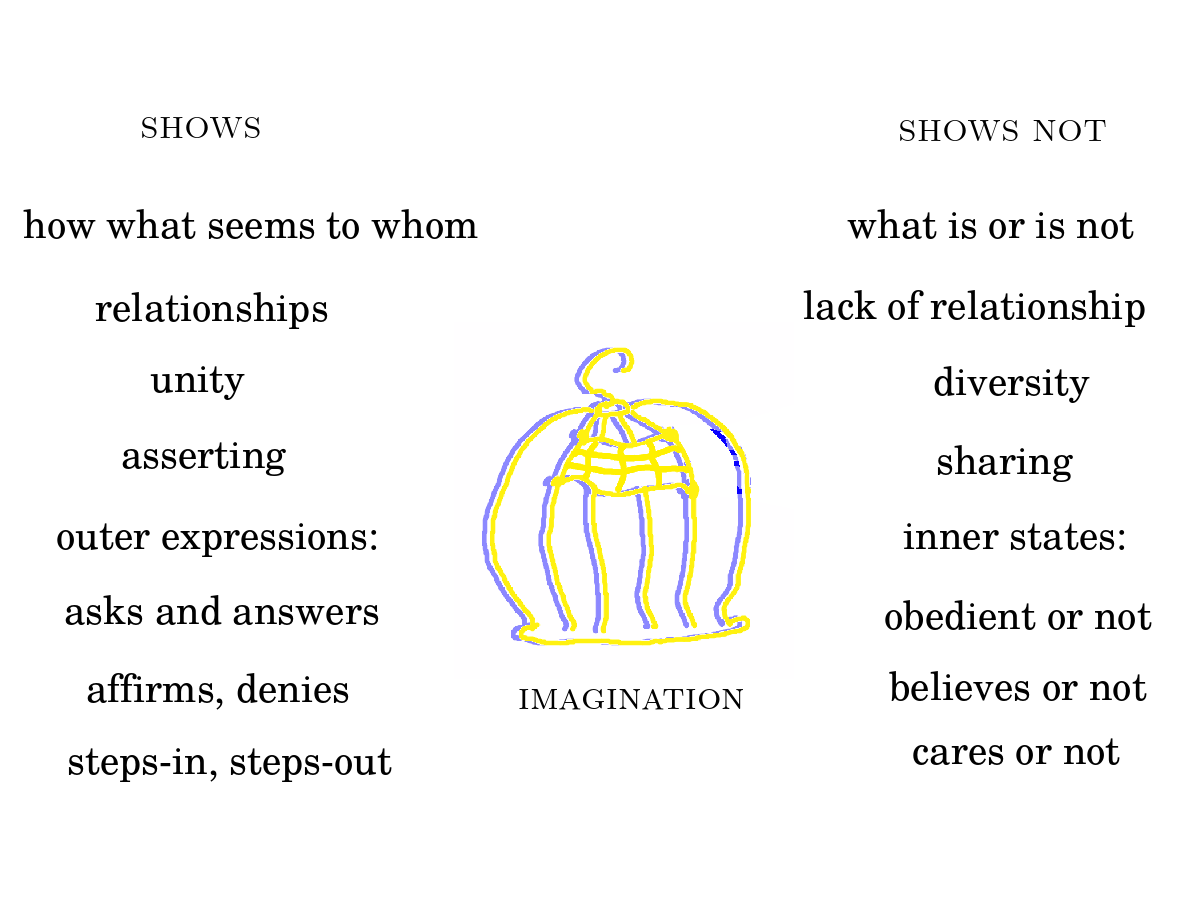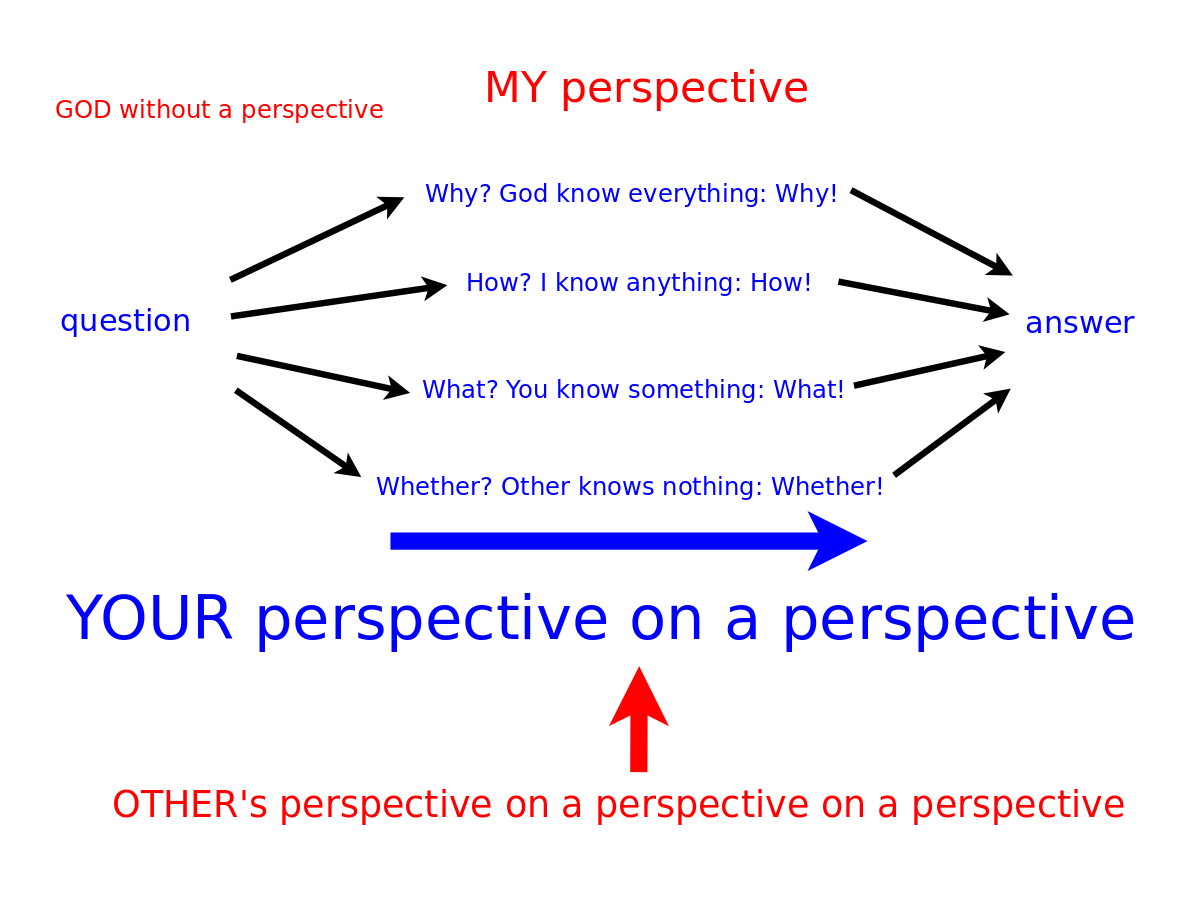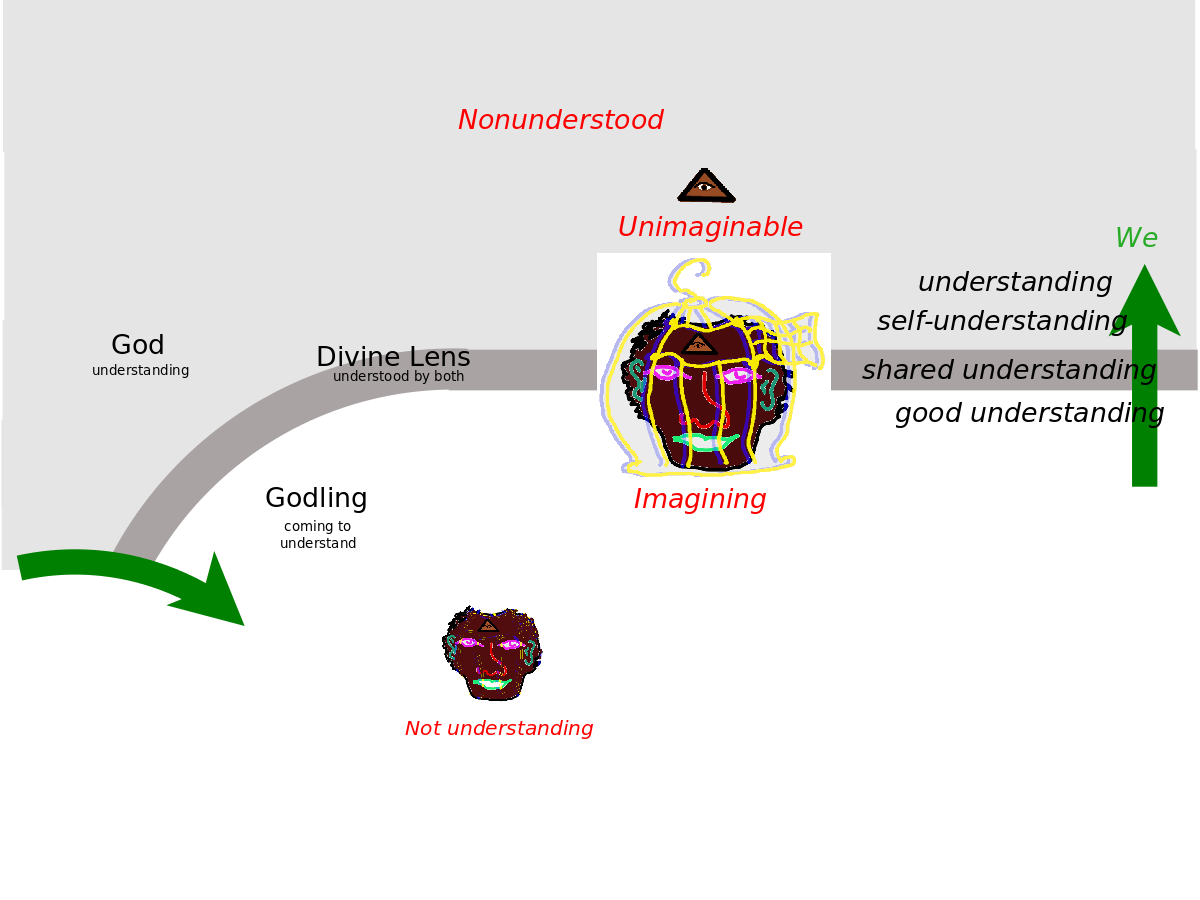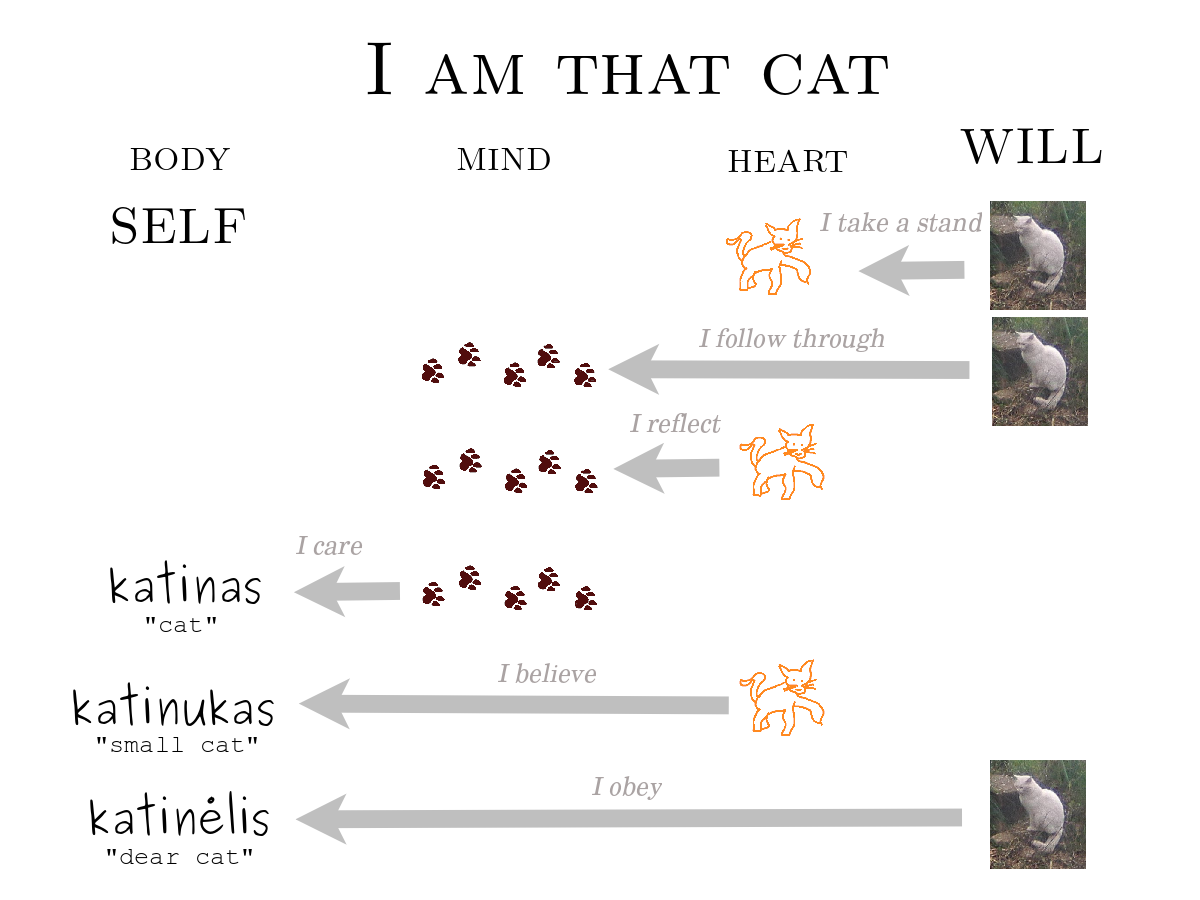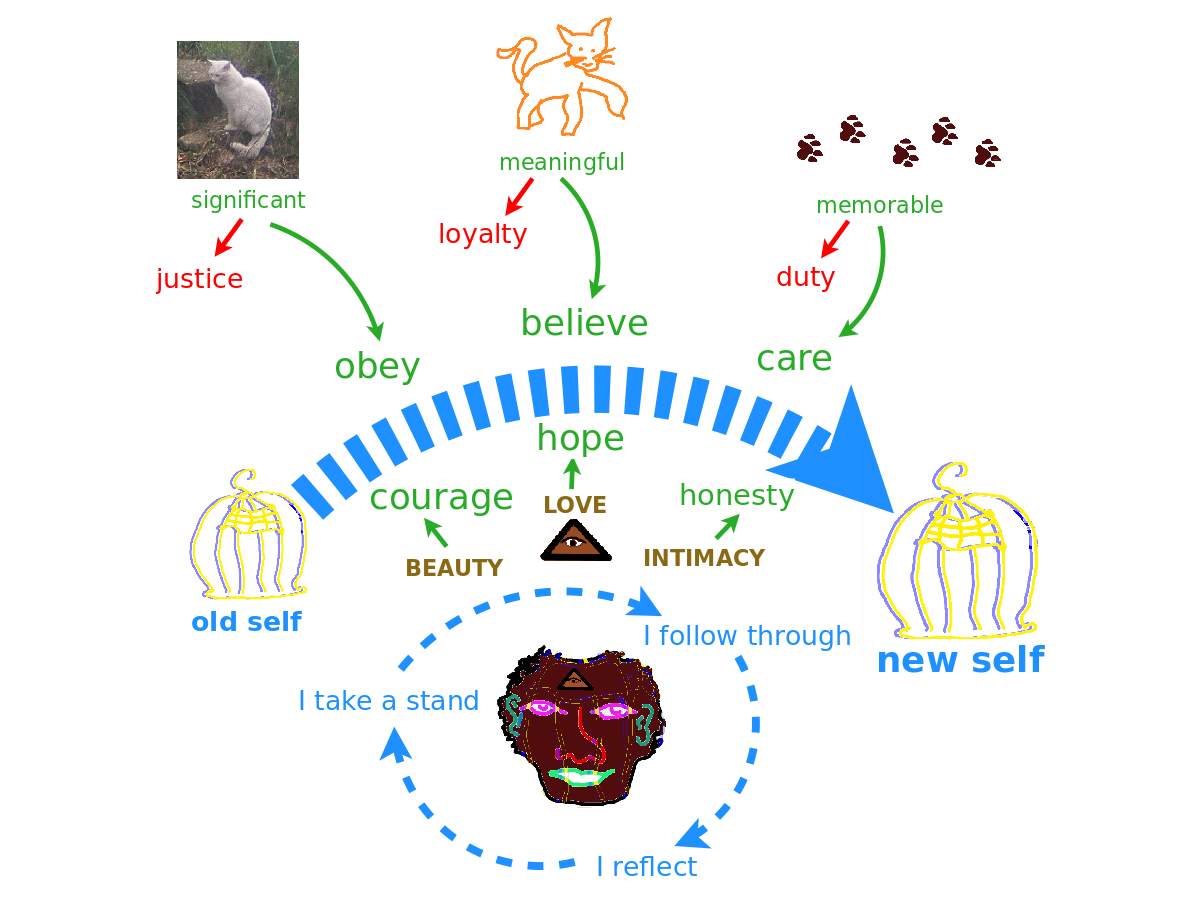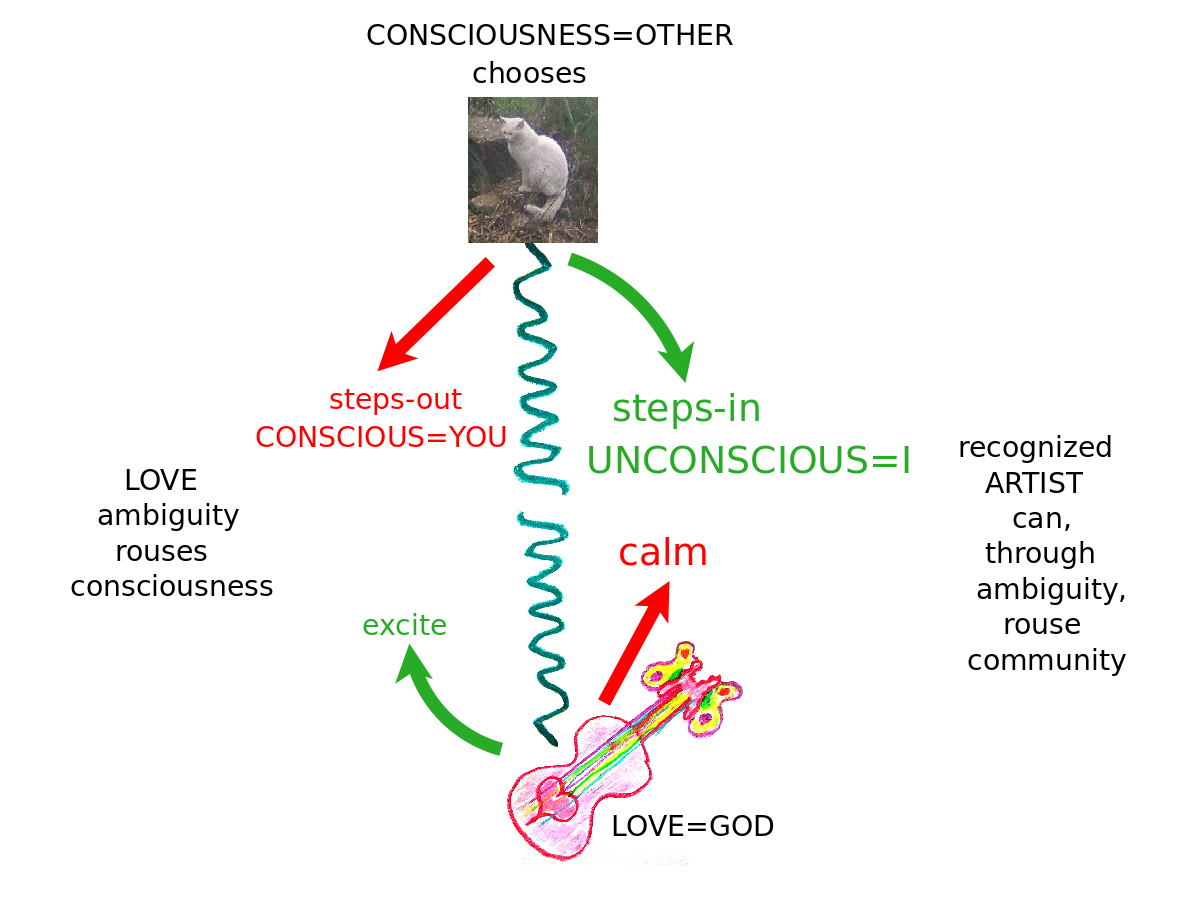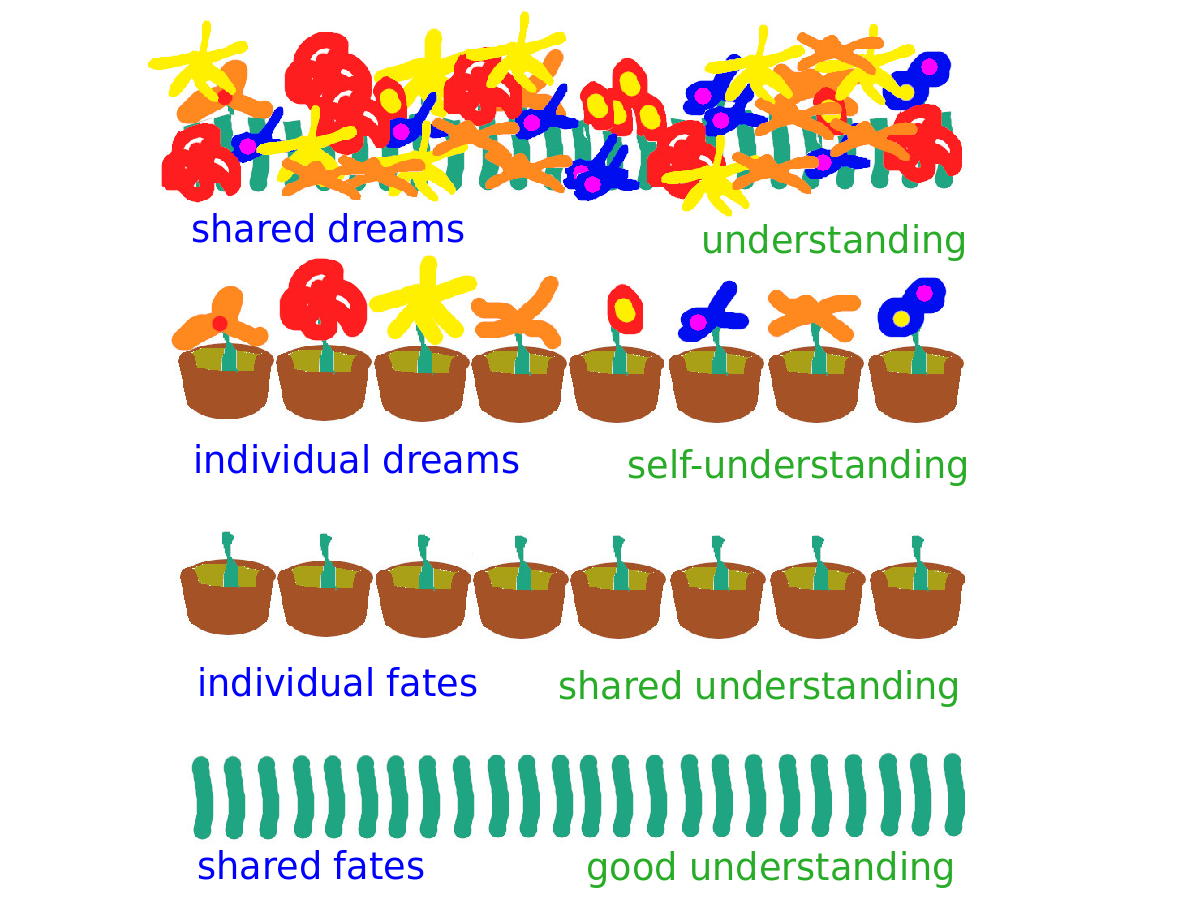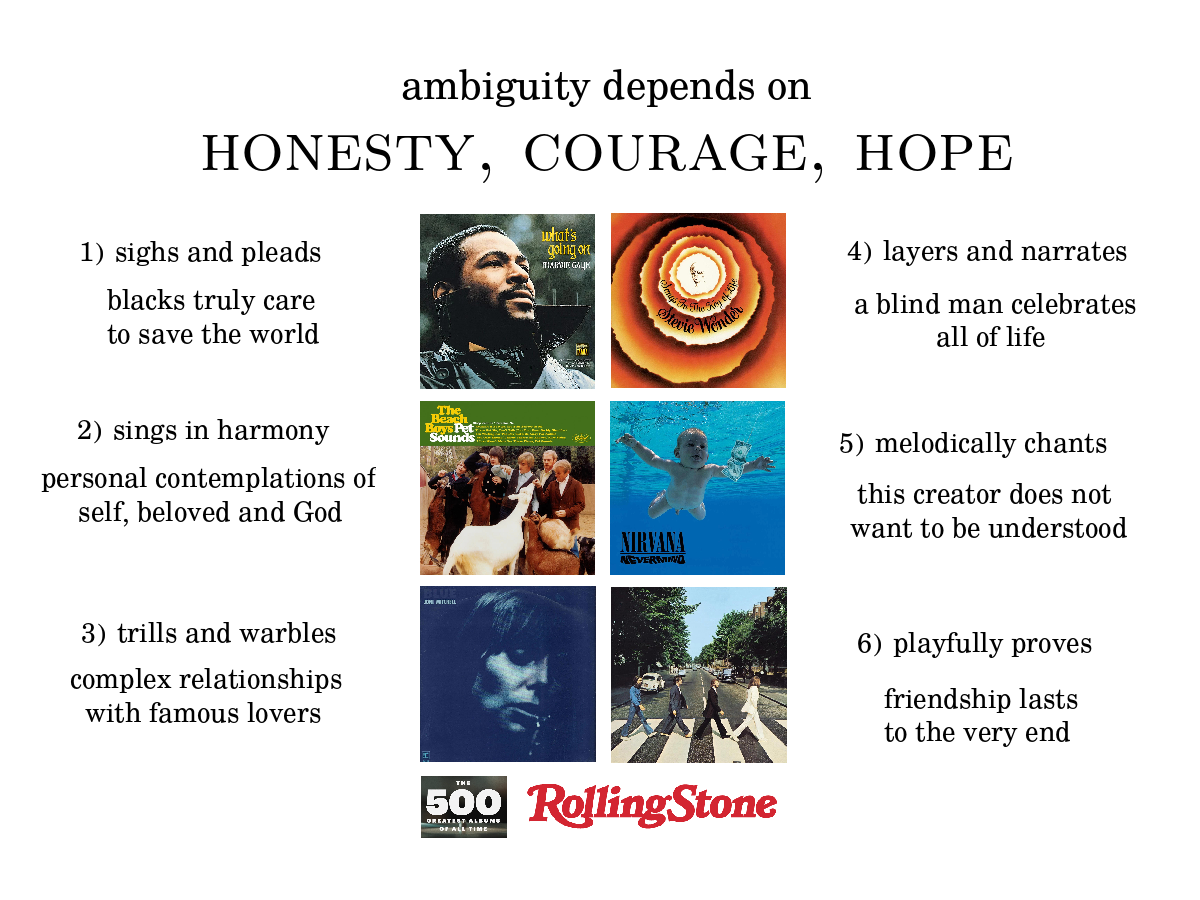- MathNotebook
- MathConcepts
- StudyMath
- Geometry
- Logic
- Bott periodicity
- CategoryTheory
- FieldWithOneElement
- MathDiscovery
- Math Connections
Epistemology
- m a t h 4 w i s d o m - g m a i l
- +370 607 27 665
- My work is in the Public Domain for all to share freely.
- 读物 书 影片 维基百科
Introduction E9F5FC
Questions FFFFC0
Software
My translation into English of my presentation Dieviško suvokimo ir žmogiškos vaizduotės akistata prie meno vartų.
Are we defined by what we imagine? Can we go beyond that? Can we engage the Unimaginable? I am Andrius Kulikauskas. This is Math 4 Wisdom. I have translated into English a presentation that I gave in Lithuanian at the Lithuanian Cultural Research Institute at their conference "Aesthetics, Philosophy of Art, and the Forms of Expression of Consciousness in Religion". This was an opportunity for me to think more about the big picture, the basis for the relationship between God and human. Subsequently, I have been thinking how everything unfolds from God as the Indefinite, who makes way for human as the Definite, who experiences the Imaginable, and transcends that by engaging God as the Unimaginable. Also, in this talk I touch upon the meaning of life, which I have been explicating in a series of videos, including how we humans internalize justice as obeying, loyalty as believing, duty as caring, and God immortalizes beauty as courage, love as hope, intimacy as honesty. So this is a great time for a fresh look at my presentation...
Divine Understanding and Human Imagination: Face-to-Face by the Gates of Art
How can we transcend the imagination? How do we transcend it with art? What do we understand upon transcending it?
Human imagination is the ruler of signs, an expert in their types and properties. Pragmatist Charles Sanders Peirce distinguished three types of signs - icons, indices, symbols - and I add to these the things they denote, so that there are four levels of knowledge.
A cat can be represented by an icon, that is, an image or picture that shows what it looks like to our senses. But it can also be indicated by its footprints or by a dead mouse, that is, by an index, which relies on causality to imply the cat. Finally, the can be referenced by an arbitrary symbol, such as the Lithuanian word "katinas", which means "cat".
Imagination connects these levels. Kristupas Sabolius, in his online book "Furious Sleep: Imagination and Phenomenology", discusses three activities of the imagination which Edmund Husserl identified - presentation, modification, neutralization - and which we can apply to our cat. We can see a real cat in our mind even with our eyes closed, because our imagination reproduces things as images. That is presentation. We can play around with the indices of that same cat, and thus infer from its paw prints that it has five legs. That is modification. In our mind, we can also transfer not the cat itself, but its image to Siberia or the moon or any other environment. That is neutralization.
Imagination also uses symbols such as words to impact, define and control a person on different levels. The Lithuanian word "katinas" can recall for us an animal that catches mice. The word "katinukas" (little cat) can attribute meaning to an image to emphasize that it is a small cat. The word "katinėlis" can signify to us an actual cat that we know and love.
Art philosopher Arthur Danto's assertion that every work of art necessarily has some content is understandable, as every sign refers to content. For Danto, a human is a system of representation. In this spirit, imagination surrounds a person with a network of signs, just as the postmodern world surrounds us with mass-produced objects, and the cerebral cortex presents and represents the whole world to us, as if we lived within a hologram.
Nevertheless, I will give a few examples to show that a person is more than their imagination. In this picture, we can see black faces, we can see a white chalice, we can imagine that it is held by two pressed faces. However, we imagine only one way at a time. A person understands that there can be two unrelated possibilities, but the imagination necessarily perceives oneness.
Here is an example of how the imagination insists on solving a puzzle in one step. Suppose I usually buy lunch in a cafe for 9 euros because it is one-third more expensive in a restaurant. However, today the restaurant has reduced its prices by one-third. Let's think, where is it cheaper now? What would you say?
It is very easy to conclude that the lunch was one-third more expensive, and now it is one-third cheaper, so the price is the same. But let's do the math. A third of nine euros is three euros. When you add that, you get twelve euros. One-third of twelve euros is four euros. After subtracting that, eight euros will remain. So the restaurant will be cheaper. What happened? The meaning of the phrase "one-third" changed, one-third of what? Algebra is thinking step-by-step. Imagination refuses to think step-by-step. Imagination thinks in one leap, decides in one go.
Imagination does not appreciate that things are not as they seem. Perhaps you didn't notice that blogger Giedrius Šarkanas was sitting in the cafe. He is now in a Lithuanian prison and will be there for three months because he presents the history of Lithuania in an illegal manner. For example, he calls captain Jonas Noreika a bandit. Noreika's granddaughter Silvia Foti has explained for the second time in a twenty-minute show by BBC World Service how Lithuanian authorities falsely deny that Noreika's rebels mass murdered the Jews of Plunge. Consequently, dozens of Lithuanian prisoners and tens of millions of BBC listeners in Africa, Asia and America get information that is not published by the Lithuanian media and that the Lithuanian national society does not even imagine.
What can the imagination do? It shows how what seems to whom, but it does not show what actually is or is not. It presents all manner of connections, but it cannot imagine that which has no connection. It is ever observing, expressing, and asserting oneness, but it is unable to think in terms of separateness, it is unable to develop, in parallel, distinct, unrelated possibilities.
Imagination can try to control a person through external ties, but she remains free unless she herself enslaves herself to it. Imagination can ask her and answer for her, but it is the person's own will to obey or disobey. Imagination affirms or denies, whereas a person believes or doubts. Imagination draws one to step in and pulls one to step out, but the person themselves decides whether they care or not.
How does one break free from the cage of imagination?
Imagination is the ability to turn a perspective upon a perspective, to join them together, and thus to accept and represent everything, personally and hermetically. In this way, imagination governs all of a person's conditions, manages all of their relationships. It's as if it puts a person in front of the TV and tells them, "Watch this!", as if it were necessary in life to watch something. However, one transcends one's conditions with one's attitude. A person can know nothing, as with the Other who observes from the sidelines, with a perspective on a perspective on a perspective. Or a person observes something as You, with a perspective on a perspective. Or a person observes anything as I, not by way of signs but through an independent perspective which gets to know the limits of the imagination, exploring all of its corners. Or that which is Unimaginable, an unconditional God, can live through a person, without any point of view, observing all not through it own but through our perspectives
What does God understand, what does human understand, which imagination does not understand?
To understand is to separate. For example, the unimaginable, unconditional God might wonder, is God necessary? Would God exist if God was not? God disappears and thereby creates conditions for God to arise anew. God understands this, and the Godling who arises comes to understand it. They are the same God because they understand the same divine lens of their shared understanding, by which they coincide, the unconditional God who understands and the Godling in conditions who comes to understand.
Human is the one who is in conditions, Dasein, who has yet to understand, for whom God is the Nonunderstood. That is why a person relies on imagination and all the connections it offers. How can a person free himself from his imagination, and understand, so that he controls it, rather than the other way around?
To the human who imagines, God is the Unimaginable. It remains for human to understand that human is the one who lives in conditions, whereas God is unconditional. By separating himself and God on this basis, he has rapport, which is to say, good understanding, in that he will not imagine the Unimaginable, and yet it may be, that the Unconditional will take up his conditions, and they will act together as We. God is not necessarily good, life is, in principle, unfair. This is unacceptable to the imagination, however, it liberates a person, because human with understanding distinguishes that, which imagination groundlessly unites.
How can I, a person in conditions, live as if there was not only me, but there was something more than me? I can take up the attitude that I don't merely seem to myself, but I truly am. The truest of all is my will. I can express it with signs ever more perfectly. I repeat my will with the expectations of my heart. I take a stand with these expectations. With my mind, I apply my principles, I switch them around according to circumstances, I act on them. Then I think over th extent to which these expectations and applications coincide, and so ever anew I take a stand, follow through and reflect.
My will cultivates my heart and my mind. I control my attitude, and so I am free to choose what I care about, what I believe, what I obey. I take responsibility for my words. I care about what is memorable, I believe in what is meaningful, I obey what is significant. I cultivate myself - my body - with memorable words of the mind, meaningful words of the heart, and significant words of the will. I control my body through which I participate in the world.
Imagination controls a person through external connections. A person becomes free by taking those connections to heart. She remembers not her duties, but what she personally cares about. She deems meaningful not what demands her loyalty, but what she herself believes in. She finds it purposeful not the justice that is imposed, but what she herself chooses to obey and submit to. In this way, an enlightened person takes responsibility for themselves, nurtures and develops themselves, sets their own inner boundaries. They try to cultivate within themselves peace, however tentative, but when tension increases and the learning cycle of taking a stand, following through and reflecting gets held up - when they come up against their own limits, it is then that they recognize beyond themselves the objectivenss of beauty, the undeniability of love, and the unconditionality of intimacy. It is then that they are able to let go of themselves, and take up a new self, more mature. In this way, the enlightened one, cultivating their self, learns to live not as their self, but rather in leaps of personal growth, by which they lean upon the Unimaginable, which loves them more than they can themselves even imagine. The enlightened one is led by virtues - courage, hope, honesty.
A person thus enlightened and liberated ever improves themselves, lives in leaps and bounds, rouses their consciousness, loves themselves. She can love another, rouse his consciousness. In doing so, she looks for the personal boundary that distinguishes him from the world, the boundary between stepping in - immersing ourselves fully in our personal experience - and stepping out - taking a look at what is going on in the may relationships around us. The enlightened person, i loving another, alternates between these modes, stepping out when the other steps in, and stepping in when the other steps out, flirting with, playing with, the boundary between these two modes, thereby fostering the consciousness of their beloved, so that even a baby, even a cat can choose, would they rather step in or step out?
Consciousness is fostered by ambiguity, notably the ambiguity that within the conditions of life there is also that which is unconditional. Ambiguity resonates in the creations of all creators, for they are unearthly, impractical, atypical interjections within that which is earthly, practical, mundane.
God's goal, and the goal shared by all enlightened people, is a culture in which everyone can develop freely and fully. For an artist, this is a serious challenge to liberate us all, to enlighten us, to gather us, and to ever enrich the concept of who we are.
Our common fate - our shared dilemma - is that we are in conditions established by the imagination. Each of us has to find rapport, find good understanding with the unconditional Unimaginable, by acknowledging its primacy. Therefore, for all of us, more valuable than our common fate are the separate fates that each of us deals with. Everyone who has established a sound relationship with the Unimaginable can work together with it, unfolding together. We treasure these individual dreams more than our individual fates. Through our individual dreams we know ourselves, understand ourselves, and begin to reveal and develop ourselves in every way. Finally, we can coordinate our unfolding with everyone else, fostering a common dream. By nurturing that common dream, we are no longer nonunderstanding, but rather we have come to understand, as has the Godling. We are We.
Established artists speak with their art to the system that recognizes them. The authorities, for their part, are concerned with patronizing, influencing and controlling quality art as the gateway to the Unimaginable, which people should admire but not pass through.
In 2020, Rolling Stones magazine updated its list of the 500 Greatest Albums of All Times. More than 300 creators, managers and critics curated this list. I listened on Spotify to more than a third of it. I am personally amazed that the top albums were those by creators who revealed themselves resolutely - honestly, courageously, hopefully. Seventh place was awarded to the album "Rumours" by "Fleetwood Mac". The group included two couples whose relationships were falling apart. They wrote personal, understanding, mature, heartfelt songs to each other about their breakups. Pure beauty emerges from broken loves. This personalness is characteristic of all the selected albums. It emboldens me likewise to be honest, brave, hopeful.
Artists are recognized by the system, or one might say, by the collective imagination. They can make hits and they know how to please. However, any recognition can quickly evaporate. Therefore it is wonderful that the works considered greatest are those which dare to say something more, which flow from their creators' sincere creativity, which offer hope that transcends the imagination.
That is my presentation. I thank Tautvydas Vēželis for the conversation we had as I prepared it.

